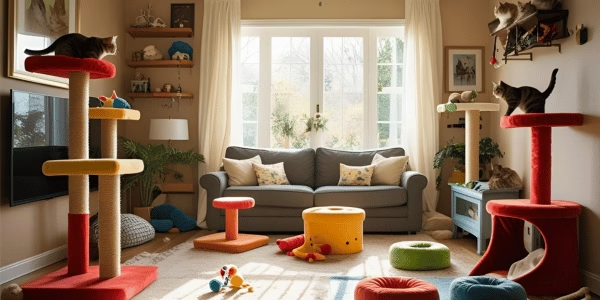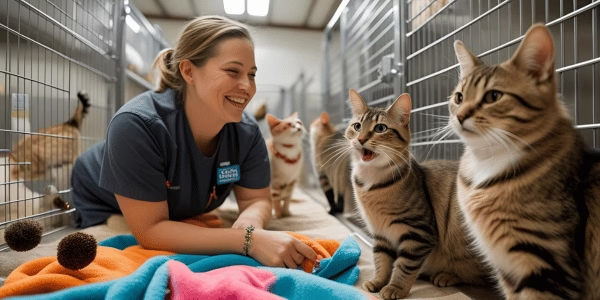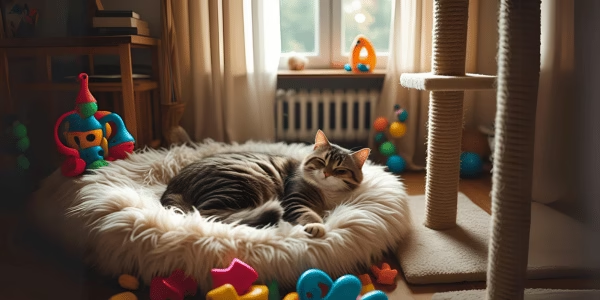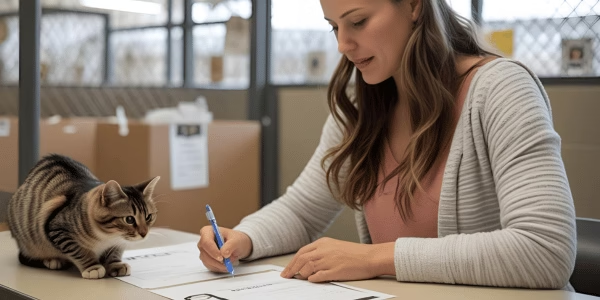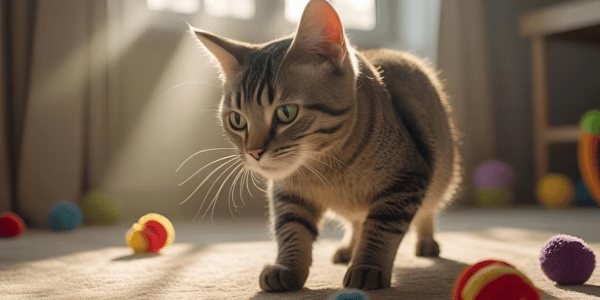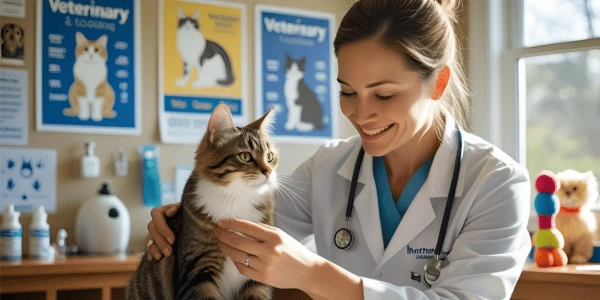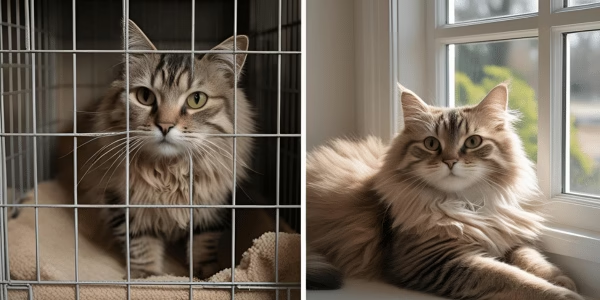So you’re thinking about adopting a cat from a shelter? That’s honestly one of the best decisions you could make, not just for you, but for some furry little soul who’s been waiting for their forever home. Trust me, there’s something magical about giving a shelter cat a second chance at happiness.
Look, I get it. Walking into a shelter can feel overwhelming. All those adorable faces looking at you through kennel doors, each one seeming to say “pick me!” But here’s the thing, with a little preparation and the right mindset, you can find your perfect feline match and make the whole process smooth as butter.
This guide is going to walk you through everything you need to know about adopting a cat from a shelter in 2025. We’re talking real talk here, the good, the challenging, and everything in between. By the time you’re done reading this, you’ll feel confident about every step of your cat adoption journey.
Getting Your Head in the Right Space Before You Start
Before you fall head over heels for those whiskers and that purr (and trust me, you will), let’s pump the brakes for just a second. Taking some time upfront to really think through what you want from this whole experience is going to save you a ton of heartache later.
Two Things You Absolutely Must Do First
First up, get your place completely ready for a cat. I’m talking full-on cat-proofing and having every single supply you’ll need sitting there waiting. Cats are already stressed from shelter life, and the last thing you want is to bring them home to chaos. Having everything ready creates this beautiful foundation for success.
Second, and this is huge, figure out exactly what you’re looking for in a cat. I know, I know, you’re probably thinking “I just want a cute, fluffy friend!” But seriously, spending time thinking about personality, energy levels, and how a cat will fit into your actual daily life will make choosing so much easier.
The Current State of Cat Adoption in 2025
Here’s some encouraging news that might surprise you: cat adoption rates are actually on the rise! In 2024, cat adoptions increased by nearly 2%, with 64% of cats entering shelters finding homes. That’s up from 62% in 2023 and a significant jump from 57% in 2019. Even more exciting? The number of cats killed in shelters dropped by 10.1% in 2024, reaching the lowest point in history.
What this means for you is that shelters are getting better at matching cats with families, and more cats than ever are finding their forever homes. In 2024, approximately 2.6 million cats were successfully adopted across the United States. The average adoption rate for cats now sits at 65%, which is actually higher than the 56% adoption rate for dogs.
The Real Cost of Cat Adoption: What You Actually Need to Budget
Let’s talk money, because this is where a lot of people get caught off guard. I’m going to give you the straight scoop on what cat adoption actually costs, so you can plan properly and avoid any financial surprises.
Initial Adoption Fees by Region
The adoption fee itself varies quite a bit depending on where you live and what age cat you’re adopting. Here’s what you can expect across different regions:
West Coast:
- Kittens: $125-$225
- Adult cats: $75-$110
- Senior cats: $0-$35
East Coast:
- Kittens: $50-$174
- Adult cats: $75-$100
- Senior cats: $25
Midwest:
- Kittens: $74-$125
- Adult cats: $25-$100
- Senior cats: $0-$75
South:
- Kittens: $100-$150
- Adult cats: $25-$50
- Senior cats: $25
The good news? These fees typically cover spaying/neutering, initial vaccinations, micro-chipping, and basic health checks. That’s easily $200-$400 worth of services you’d otherwise pay for separately.
First-Year Setup Costs
Beyond the adoption fee, you’re looking at some upfront expenses to get your home cat-ready. Here’s what you’ll actually need to spend:
Essential Supplies ($200-$500):
- Cat carrier: $20-$75
- Litter box: $10-$200 (depending on how fancy you go)
- Initial litter supply: $15-$75
- Food and water bowls: $10-$30
- Scratching posts: $30-$80
- Cat bed: $20-$60
- Basic toys and treats: $30-$50
- Brush and grooming supplies: $8-$20
Initial Veterinary Care ($100-$300):
Even if your cat comes with recent vet care, you’ll want to establish a relationship with a local vet and get a baseline health check within the first week.
Monthly Ongoing Costs
Here’s where you need to be realistic about the long-term commitment. Monthly expenses for a cat typically run $70-$260, depending on your choices and your cat’s needs.
Food and Treats ($29-$49/month):
This varies hugely based on what you feed them. Basic dry food might run $20/month, while premium wet food diets can hit $75/month or more.
Litter ($15-$100/month):
Most people spend around $20-$30/month on litter, but this depends on the type you choose and how often you change it.
Routine Healthcare ($20-$70/month when averaged):
Annual vet visits, vaccinations, and preventive care average out to about $240-$840 per year, or $20-$70 monthly.
Pet Insurance ($22-$105/month):
This is optional but can save you thousands if your cat develops health issues. Premiums vary based on coverage level and your cat’s age.
Emergency Fund Reality Check
Here’s something most people don’t talk about enough: you absolutely need an emergency fund for your cat. Veterinary emergencies can easily run $500-$3,000 or more. I’ve seen too many heartbreaking situations where people couldn’t afford emergency care for their pets.
Recommended Emergency Savings: $1,000-$3,000 minimum, or consider pet insurance as an alternative way to manage unexpected costs.
Annual Costs by Life Stage
Kittens to Adult Years: $830-$3,095 annually
Senior Years: $760-$3,495 annually (potentially higher due to increased medical needs)
The interesting thing about senior cats is that while their basic care costs might decrease slightly, medical expenses often increase significantly. However, many senior cats live comfortably for years with minimal extra care.
Money-Saving Tips for Cat Adoption
Look for Adoption Specials: Many shelters offer reduced fees during certain times of year, especially around holidays or during “kitten season.”
Consider Adult or Senior Cats: Lower adoption fees, and often these cats are already past the expensive kitten phase.
Ask About What’s Included: Some shelters include starter supplies, food samples, or even temporary pet insurance in their adoption packages.
Military and Senior Discounts: Many shelters offer reduced fees for military members and senior citizens.
Hidden Costs to Consider
Pet Sitting/Boarding: $20-$50 per day when you travel
Furniture Protection: Cats scratch, so budget for furniture covers or replacement items
Potential Property Damage: Security deposits for rentals often increase with pets
Grooming: While cats groom themselves, long-haired breeds may need professional grooming
Is Cat Adoption Worth the Investment?
Absolutely. When you break down the cost per day over a cat’s 15-20 year lifespan, you’re looking at roughly $2-$5 daily for the companionship, stress relief, and pure joy a cat brings to your life. Compare that to other forms of entertainment or therapy, and it’s honestly a bargain.
Plus, you’re literally saving a life. That’s priceless.
The Big Questions That’ll Guide Your Decision
Kitten or Grown-Up Cat?
This one’s a biggie because it completely changes your day-to-day life. Kittens are absolutely adorable, like, painfully cute, but they’re basically tiny tornadoes of energy that need constant supervision. We’re talking litter training, socialization, and kitten-proofing everything because they will try to eat your charging cables.
Here’s an interesting fact: almost 52% of all cats adopted are kittens. But don’t let that sway you if you’re thinking about an adult cat. Adult cats come with personalities already figured out. Most are already house-trained and have settled into who they are. Senior cats (7+ years) can be absolute gems, they’re usually calmer, more chill, and incredibly grateful for a cozy retirement home.
One Cat or Two?
This decision really comes down to your lifestyle and budget. Two cats can keep each other company, which is amazing if you work long hours. But let’s be real, you’re doubling everything. Food costs, vet bills, litter, the works. Some shelter cats are bonded pairs and have to go together, which can actually make the transition easier since they’ve got their buddy with them.
What Kind of Personality Are You Actually Looking For?
Time for some honest self-reflection here. Are you looking for a lap cat who’ll follow you around all day, or do you want a more independent type who’s happy doing their own thing? Do you want a chatty cat who’ll have full conversations with you, or a quiet companion? Long-haired beauty or low-maintenance short hair?
There’s no wrong answer here, just what works for your life. Be honest with yourself because this is a 15-20 year commitment we’re talking about.
Where Should You Actually Adopt From?
Stick with local shelters and rescue organizations. These folks know their cats inside and out, they’ve assessed their health, temperament, and quirks. You might also find some great adoption events in your community, or look into foster-to-adopt programs if you qualify.
Just please, please avoid pet stores and sketchy breeders. If you’re dead set on a specific breed, do your homework and find ethical breeders who actually care about their animals’ welfare.
Questions You Need to Ask the Shelter Staff
What’s This Cat’s Story?
Understanding whether a cat was surrendered by their family, found wandering the streets, or transferred from another facility tells you a lot about what you’re working with. Current data shows that 49% of cats entering shelters are strays, while 25% are surrendered by their owners. A street cat might need more time to trust indoor living, while a surrendered pet might bounce back faster.
Any Health Stuff I Should Know About?
Don’t be shy about asking for the full health rundown. Shelter cats sometimes come with issues like dental problems, FIV, diabetes, or kidney disease. Here’s the thing though, don’t let health issues automatically rule out a cat. Many conditions are totally manageable with the right care. You just need to know what you’re signing up for.
Same goes for disabilities like blindness or deafness. These cats can make incredible companions with some simple accommodations.
How Do They Get Along With Others?
This is crucial if you’ve got other pets at home. You need to know how this cat feels about other cats, dogs, kids, basically anyone they might encounter in your house. The last thing you want is to bring home a cat who’s going to be miserable in your specific setup.
What’s Their Daily Routine Like?
Ask about everything, what they eat, how much grooming they need, litter preferences, whether they’re used to going outside. Keeping things consistent during the transition helps reduce stress for everyone involved.
Getting Your Home Ready for Success
Setting Up a Safe Haven
Your new cat needs a designated chill-out zone where they can decompress without feeling overwhelmed. Pick a quiet room away from other pets and household chaos. Stock it with everything they need, litter box, food and water, comfy bed, scratching post, and some toys.
The minute you get home, show them where the litter box is. This prevents accidents and helps them start mapping out their new territory. Most shelters recommend keeping cats in this safe room for at least the first few days, and some cats may need weeks before they’re ready to explore the whole house.
The Shopping List You Actually Need
Food and Water Gear:
- Stainless steel or ceramic bowls (plastic can harbor bacteria)
- Whatever food the shelter was feeding them (you can switch later)
- Some good treats for bonding
Comfort Zone Essentials:
- A really comfy bed
- Soft blankets or towels
- Sturdy cat carrier
- ID tag and collar if appropriate
Health and Hygiene:
- Uncovered litter box (most cats prefer this)
- Unscented, clumping litter
- Brush for grooming sessions
- Nail clippers
Fun Stuff:
- Scratching post (non-negotiable)
- Mix of toys, interactive ones for you two to play with, and solo entertainment
- Something high they can perch on
Making Your Place Cat-Safe
Time to think like a cat and spot all the trouble they could get into. Toxic plants need to go, small objects that could be swallowed need securing, and electrical cords should be protected. If you’re adopting an indoor-only cat, make sure windows have secure screens and there are no escape routes.
The Adoption Process: What’s Actually Going to Happen
Paperwork and Screening
Good shelters are going to want to know about you, your experience with pets, your living situation, what you’re looking for. Don’t take this personally; they’re trying to make good matches that work out long-term. Be honest about everything because that’s how you end up with the right cat.
Some places do home visits or want references. Again, this isn’t them being nosy, it’s them caring about their animals. The adoption process can vary significantly, some adoptions happen in one visit, while others might take several days if applications need processing.
Meeting Your Potential New Best Friend
Spend real time with any cat you’re considering. Ask to hang out with them outside their kennel if possible because cats act totally different when they’re not in cage mode. Watch their body language, see how they respond to you, and get a feel for their energy level.
If you’ve got other pets, ask about meet-and-greet sessions. Some shelters can arrange controlled introductions before you commit.
Making the Call
Don’t rush, but don’t overthink it either. Trust your gut while keeping practical stuff in mind. The “perfect” cat might not exist, but the right cat for you absolutely does.
Bringing Your New Family Member Home
The First Day or Two
Keep your new cat in their safe room initially, even if it feels mean. They need time to decompress from all the stress and change. Some cats hide for hours or even days, this is completely normal behavior. The average length of stay for cats in shelters is about 45 days, so they’re used to a very different environment.
Stick with whatever food they were eating at the shelter for now. If you want to change their diet later, do it gradually over a week or so to avoid tummy troubles.
The First Few Weeks
Your cat will let you know when they’re ready to explore beyond their safe room. For some cats, this happens in a few hours. For others, it might take days or weeks. Follow their lead and don’t push it.
Generally speaking, don’t let newly adopted cats outside for at least 2-4 weeks. They need time to bond with you and understand that your place is home before they can safely explore the great outdoors.
Building Your Bond
Patience is everything here. Some rescue cats have been through rough times and need time to learn to trust humans again. But with consistent kindness and patience, you’ll get there.
Try gentle play sessions, offer treats, and talk to them softly. Let your cat set the pace for physical affection, some are immediately cuddly, others need weeks to warm up to being touched.
Special Situations to Consider
Senior Cats
Senior cats often make the most amazing companions, but they might need more medical care. They’re usually calmer, already know the ropes, and are just so grateful for a comfortable place to spend their golden years. Don’t let age scare you off from a wonderful friendship.
Special Needs Cats
Cats with disabilities or chronic conditions can live full, happy lives with proper care. These cats often get overlooked, so choosing one truly saves a life. Just make sure you research their specific needs and can provide the right accommodations and medical care.
Bonded Pairs
Some cats are emotionally attached and have to be adopted together. While this doubles your commitment, bonded pairs often settle in more easily because they have each other for comfort.
Red Flags to Watch Out For
At the Shelter
Be wary of places that won’t let you spend time with cats before adopting, won’t share health or behavioral information, or pressure you to decide on the spot. Good shelters want successful adoptions and will support your decision-making process.
With Individual Cats
While many behavioral issues can be worked through with patience, be realistic about what you can handle. Severe aggression, extreme fearfulness that doesn’t improve, or health issues beyond your resources might mean it’s not the right match.
Setting Yourself Up for Long-Term Success
Getting Veterinary Care Sorted
Book a wellness check within the first week, even if the shelter just had them examined. This gets you connected with a local vet and establishes baseline health records for your cat.
Keeping Things Interesting
Cats need mental and physical stimulation throughout their lives. Rotate toys regularly, provide climbing opportunities, and make time for daily play sessions. This prevents behavioral problems and keeps your cat healthy and happy.
Building Your Support Network
Stay connected with your adoption organization’s support services. Many shelters offer behavioral help, training resources, and even temporary boarding if you need it. Don’t hesitate to reach out if challenges come up, early intervention can prevent small issues from becoming big problems.
Understanding the Bigger Picture
The good news is that shelter cat adoption is trending in a positive direction. In 2024, total adoptions for dogs and cats reached 4,192,443, with over 2 million of those being cats. Cat adoption rates have steadily improved, increasing from 59% in 2019 to 65% in 2023.
What’s even more encouraging is that fewer cats are being euthanized. The number of cats experiencing non-live outcomes dropped by 3% in 2024 compared to 2023, and an incredible 37% fewer than in 2019. This means that when you adopt from a shelter, you’re part of a movement that’s literally saving lives.
Making This Life-Changing Decision
Choosing the right cat from a shelter isn’t just about falling for a cute face, though that definitely happens! It’s about making a thoughtful, informed decision that works out beautifully for both you and your future feline friend.
Following this comprehensive cat adoption guide sets you up for a successful, rewarding relationship that could last 15-20 years. Remember, adopting a cat from a shelter doesn’t just change your life, it literally saves theirs. With cat adoption rates at an all-time high of 64% and shelter kill rates at historic lows, you’re joining a movement that’s making a real difference.
Take your time, ask all the right questions, and trust the process. Your perfect feline companion is out there waiting for you at a shelter right now, ready to become your new best friend and family member.
Ready to start this amazing journey? Contact your local animal shelter today and begin the process of finding your new feline family member.
Frequently Asked Questions
How long does adopting actually take?
It varies a lot depending on the shelter and your situation. Some adoptions happen in one visit, others might take days or weeks if they need to process applications or do home visits. Good shelters prioritize the right match over speed.
What if my new cat doesn’t get along with my other pets?
Proper introductions are key and should happen gradually over days or weeks. If problems persist, talk to your vet or a pet behaviorist. Some conflicts can be resolved with time and proper management, while others might require finding a different home.
How much money should I plan on spending?
Initial costs include adoption fees ($25-$225), supplies ($200-$500), and vet care ($100-$300). Monthly expenses typically run $70-$260 for food, litter, and routine care, plus extra for medical emergencies or special needs.
What if I need to return my adopted cat?
Most reputable shelters will take cats back if things don’t work out, though policies vary. Contact your adoption organization right away if problems arise, they often have resources to help resolve issues before considering return.
How do I know if a cat is right for my family?
The right cat should match your energy level, lifestyle, and household setup. Trust your instincts while considering practical factors like grooming needs, activity level, and how they get along with kids or other pets.
Should I get pet insurance?
Pet insurance can be a lifesaver for unexpected medical expenses. Premiums range from $22-$105 monthly, but can save you thousands on emergency care. Consider your financial situation and risk tolerance when deciding.
What’s included in most adoption fees?
Most shelter adoption fees cover spaying/neutering, initial vaccinations, micro-chipping, basic health screening, and sometimes de-worming. Some shelters also include starter supplies or temporary pet insurance.
Resources
- ASPCA Cat Care Guidelines
- Shelter Animals Count, National shelter statistics database
- Best Friends Animal Society, No-kill shelter resources


